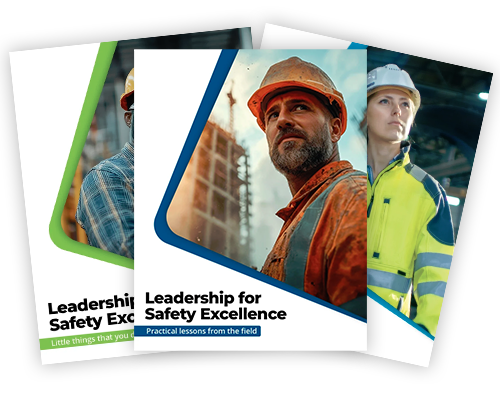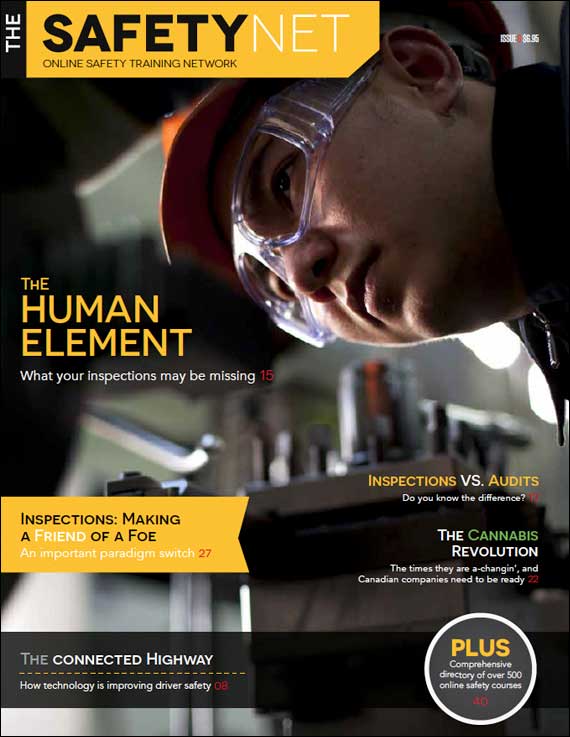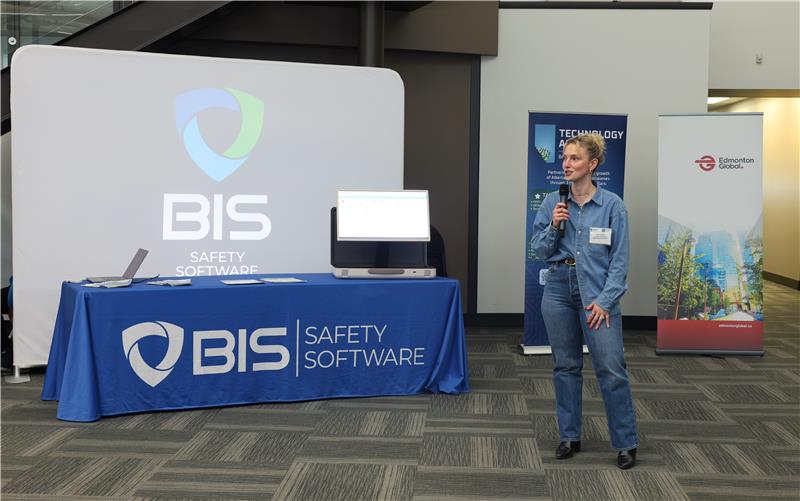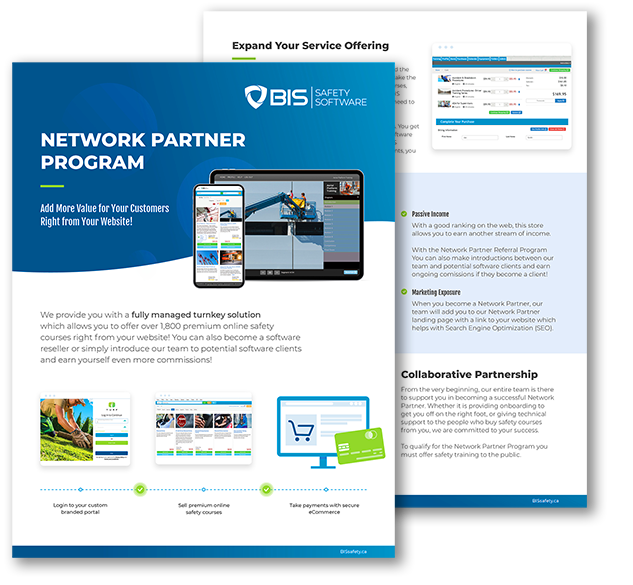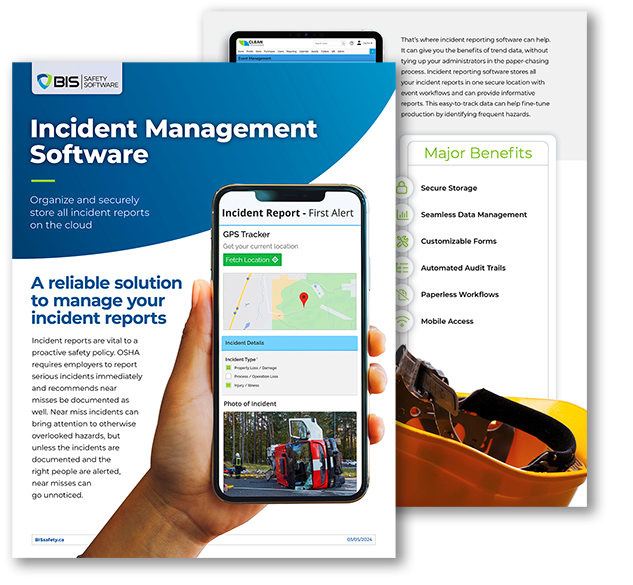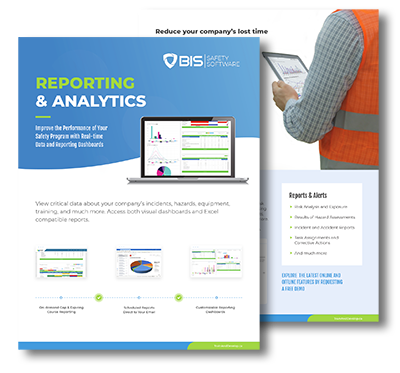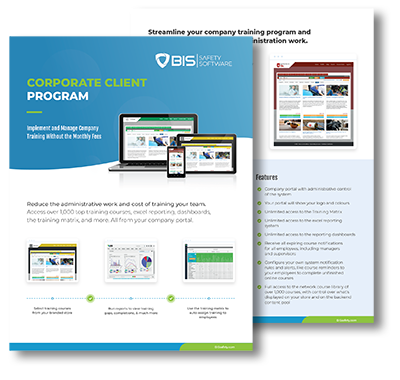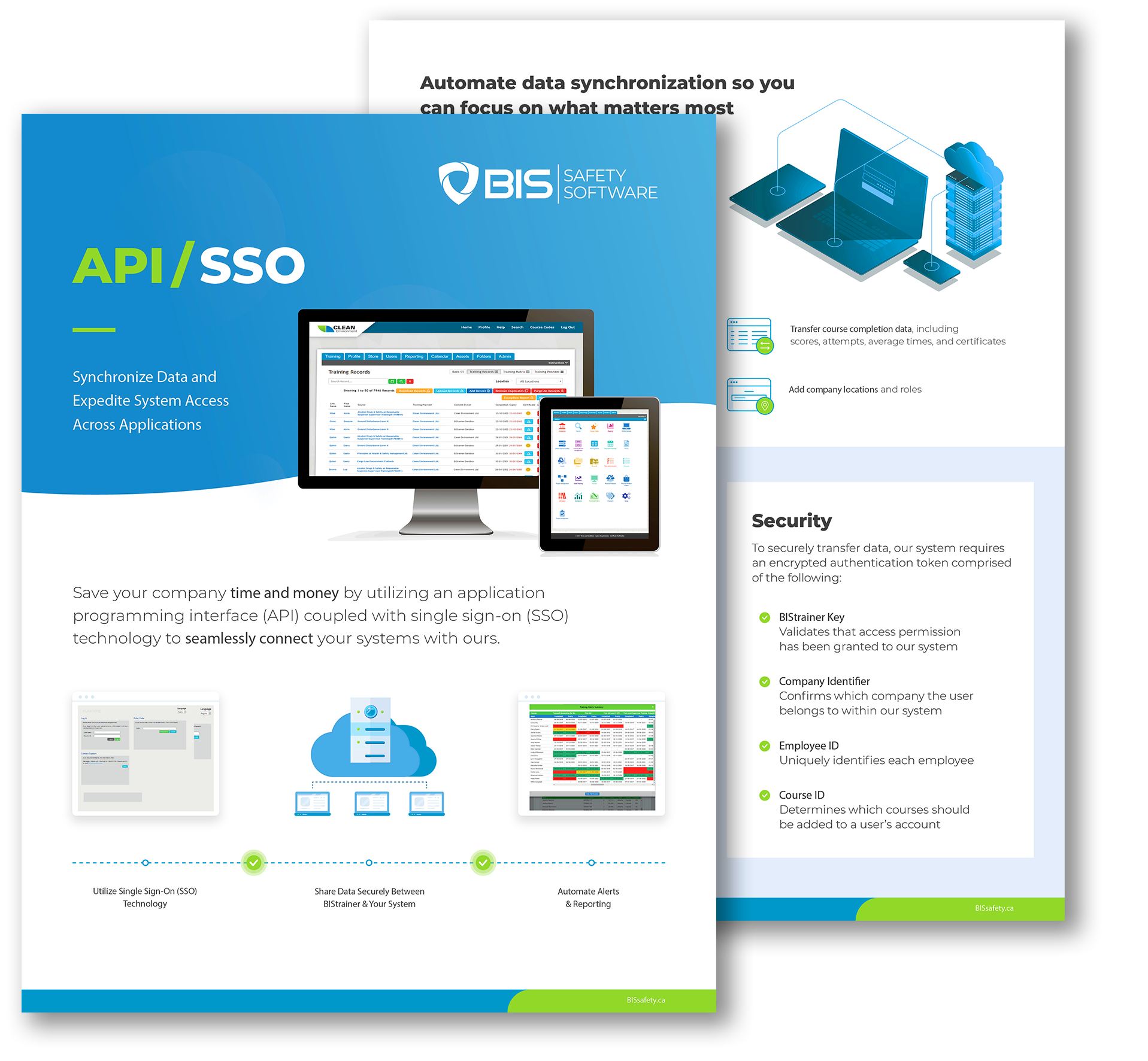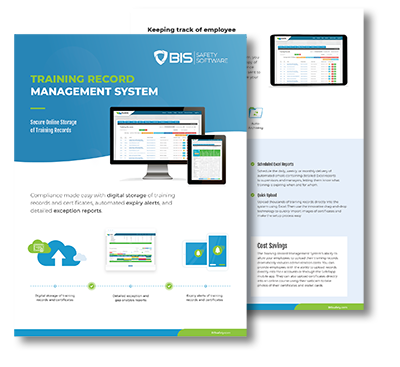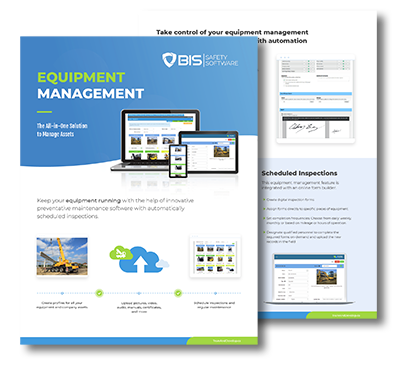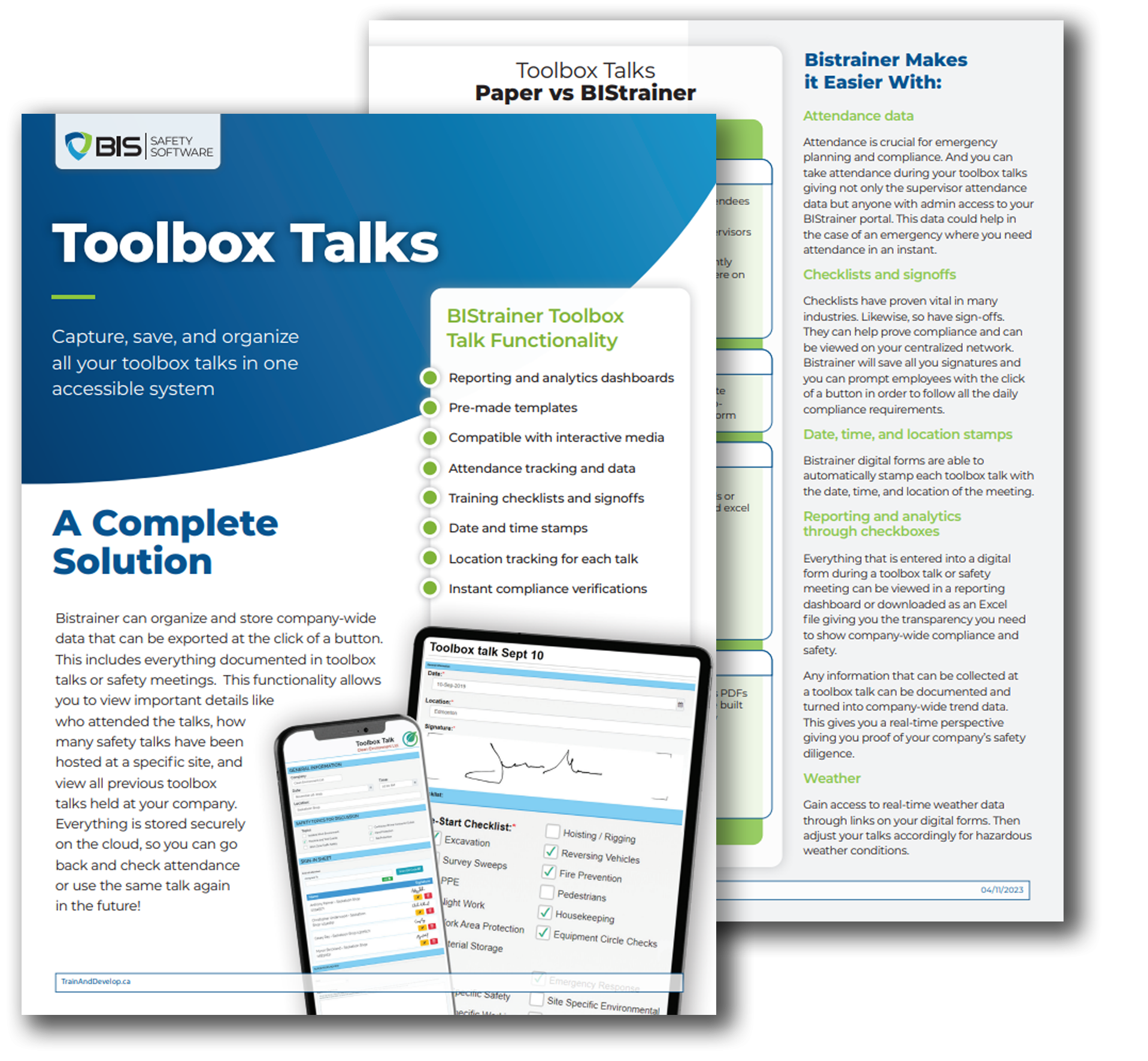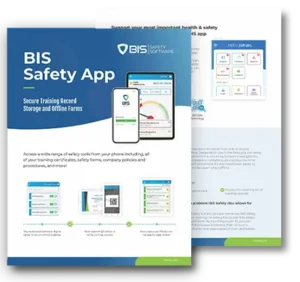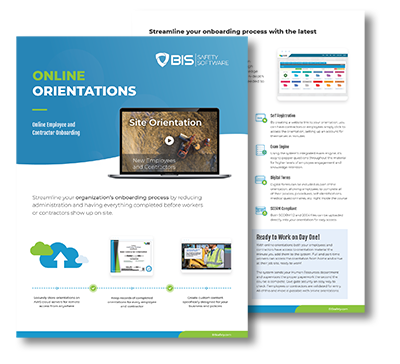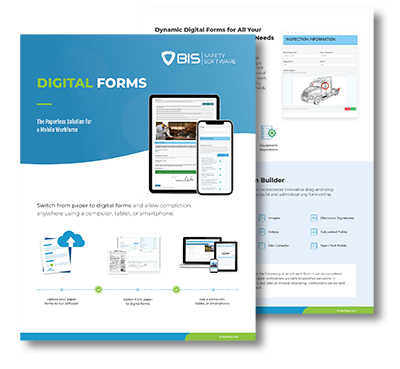
Safety is nothing new, it’s human nature to watch out for one’s well-being. Yet a governed approach to safety is relatively new.
Over the last century, we’ve seen safety transform from self-regulated to regionally mandated. Safety in the past mainly fell on the peers, mentors, and the specialists themselves. Now it’s still crucial to have a knowledge-sharing crew like the old, but some of the old responsibilities have been reduced thanks to signage, information, awareness training, and safety gear. Let’s explore some of the centralised changes that ushered us into today.
The Early Days of Safety: A Look at the Evolution of Equipment
In the early 20th century, workplace safety was still a developing concept, with much of the focus placed on preventing the most egregious hazards in industries such as mining, construction, and manufacturing. At this time, equipment was basic, often homemade, and not standardized. Here’s a look at some of the pivotal safety equipment developed during this period and the years they were introduced:
1. Safety Goggles (1900s)
- Purpose: Protecting the eyes from debris, dust, and harsh light.
- Evolution: Initially made from glass and later evolved to incorporate shatter-resistant materials.
2. Respirators (1910s)
- Purpose: Shielding lungs from harmful dust and gas, especially prevalent in mining and chemical industries.
- Evolution: Early versions were simple masks made of cloth and rubber, which evolved into the more effective gas masks used during World War I.
3. Hard Hats (1919)
- Purpose: Protecting workers’ heads from impact and falling objects.
- Evolution: The first industrial hard hat, known as the “Hard Boiled hat”, was invented by Edward W. Bullard. It was originally made from steamed canvas, glue, and black paint.
4. Safety Boots (1920s)
- Purpose: Offering protection for the feet against heavy objects and sharp materials.
- Evolution: Early boots were made of heavy leather with steel toes added for extra protection, which became a standard in industrial footwear.
5. Ear Protection (late 1920s)
- Purpose: Preserving hearing in environments with constant, loud noise.
- Evolution: Early forms of ear protection were rudimentary, often mere cotton wool stuffed into the ear canal, evolving into more effective earmuffs and earplugs.
6. Safety Belts (1930s)
- Purpose: Preventing falls from heights in construction and utility jobs.
- Evolution: Initial designs were basic belts with simple hooks, evolving into full-body harnesses with multiple attachment points for better safety.
These early developments in safety equipment were crucial stepping stones in the journey toward modern workplace safety standards. Each piece of equipment was a response to the specific dangers of the time and marked progress towards understanding and mitigating workplace risks. These innovations laid the groundwork for the comprehensive safety protocols and advanced protective gear we see in industries today.

The Mid-Century Shift in Workplace Safety: A Closer Look at Regulations and Awareness
The mid-20th century marked a significant turning point in the evolution of workplace safety. This period was characterized by an increasing industrial output post-World War II, which brought heightened awareness to the numerous risks present in rapidly growing industries. This era saw the establishment of pivotal safety regulations and the founding of crucial safety organizations, which collectively enhanced the safety standards across various sectors.
1. The Establishment of Regulatory Bodies
- Occupational Safety and Health Administration (OSHA) – 1970, United States
- Purpose: OSHA was created under the U.S. Department of Labor to ensure safe and healthful working conditions by setting and enforcing standards and by providing training, outreach, education, and assistance.
- Impact: The formation of OSHA was a response to an increasing number of workplace fatalities and injuries. By enforcing safety standards, OSHA significantly contributed to the reduction of workplace injuries and deaths.
2. Key Safety Regulations Introduced
- The Coal Mine Safety Act (1952), United States
- Purpose: Specifically aimed at improving safety in coal mines following several deadly mining disasters.
- Impact: This act led to more stringent inspections and regulations in the mining industry, including mandatory safety standards for coal dust and gas monitoring.
3. Industrial Focus and Technological Advances
- Construction and Manufacturing (1940s-1960s)
- Safety Focus: With the post-war building boom, there was an urgent need for safety regulations in construction and manufacturing to handle the increased risk from heavy machinery and high-rise construction projects.
- Technological Advances: Introduction of safer construction equipment, automated systems in manufacturing, and better personal protective equipment.

4. Rising Worker Rights and Safety Culture
- Labor Movements (Throughout the mid-20th century)
- Purpose: Workers increasingly organized to demand safer working conditions and the right to participate in safety planning.
- Impact: These movements led to greater employee involvement in safety practices and fostered a culture of safety that emphasized preventive measures.
Technological Integration: Safety Goes Digital
As we moved into the late 20th and early 21st centuries, technology started playing a pivotal role. The introduction of computers and software solutions in safety management marked a new era. Today, companies like BIS Safety Software are at the forefront, developing digital Environmental, Health, and Safety (EHS) modules and offering online training courses that not only comply with regulations but also provide accessible and comprehensive safety training.
Data-Driven Safety: The Modern Approach
The latest developments in safety are characterized by data-driven approaches. Utilizing big data, AI, and IoT, safety systems can now predict potential hazards and prevent accidents before they occur. Wearable safety devices and smart helmets equipped with sensors provide real-time data to both workers and remote monitoring teams, enhancing on-site safety exponentially.
Cultural Evolution: Safety as a Shared Responsibility
Perhaps one of the most significant changes in safety over the last century is the shift in mindset. Safety is no longer viewed as solely the employer’s responsibility but as a collaborative commitment between employers and employees. This cultural shift has led to the development of training programs that empower workers to take an active role in maintaining safety standards.
Looking Ahead: The Future of Safety
What does the future hold? If the past century tells us anything, it’s that safety will continue to evolve with advancements in technology and changes in workplace practices. Innovations like augmented reality for safety training and AI for hazard recognition are on the horizon, promising to make workplaces even safer.
As we continue this journey, one thing remains clear: the importance of adapting and adopting new safety measures will always be integral to protecting lives and livelihoods. The next century of safety starts with us today, learning from the past and building a safer tomorrow.
Related Articles
- All Posts
- #EmergencyPreparedness
- 2025 safety trends
- 360 Immersive
- 360immersive
- 6S Safety
- accident prevention
- accidental careers
- accountability
- adjustable workstations
- adult education
- AFAD
- AI automation
- AI implementation
- AI in business
- AI in operations
- AI in Safety
- AI podcast
- AI strategy
- AI transformation
- Airborne Hazards
- Alberta safety
- Alberta safety courses
- Allan James Moore
- Anhydrous Ammonia
- artificial intelligence
- asking for help
- audit findings
- audit readiness
- Audit Reporting
- automation in safety
- automation strategy
- avoidable injuries
- awareness
- Aztec Safety
- back strain
- BambooHR integration
- Bear safety
- behavior-based safety
- Behavioral Safety
- behavioural safety
- biometric sensors
- BIS Podcast
- BIS Safety Podcasts
- BIS Safety Software
- BIS Safety Spotlight
- black holes
- Blame Culture
- Blue Angels
- Boom Lift Safety
- BP Texas City Explosion
- Brave Leadership
- Brett Burkard
- bump test
- burnout
- business automation
- calibration
- call before you dig
- Canadian Compliance
- Canadian OHS
- Canadian safety
- Canadian safety history
- Canadian Safety Regulations
- Canadian safety standards
- Canadian wilderness safety
- carbon monoxide
- Cargo Securement
- Carolynne Heron
- CCOHS
- chemical
- Chemical Safety
- chemical vapors
- chronic injuries
- chronic pain
- cloud-based safety tools
- Coming Soon
- Commercial Drivers
- Commercial Vehicle Safety
- Communication in Safety
- Communication Systems
- community safety programs
- Competency in Safety
- complacency in safety
- Compliance
- compliance courses
- Compliance In Canada
- compliance issues
- Compliance management
- Compliance Reporting
- compliance software
- compliance tools
- compliance tracking
- compliance training
- compliance vs protection
- confined space
- Confined Space Safety
- Construction advocacy
- Construction education
- Construction industry
- construction safety
- construction safety training
- construction technology
- ConstructionSafety
- continuous improvement
- continuous safety improvement
- corporate culture
- corporate training
- corrective actions
- CPR and AED
- crane
- CSA standards
- Customer Spotlight
- Customer Spotlight Kevin Swinden Global Hazmat Safety Culture Hazmat Management Dangerous Goods Competency in Safety Workplace Risk Mitigation BIS Training Clients Canadian EHS
- customized training
- daily trip inspection
- Damage Prevention
- Dangerous Goods
- dangerous goods classification
- Danny Sellers
- data-driven safety
- debriefing
- Decision Analysis
- Decision quality
- defect management
- defect tracking
- defensive driving
- DEI in onboarding
- digital badges
- digital compliance
- digital FLHA
- digital forms
- Digital Hazard Reporting
- Digital Onboarding
- digital safety
- Digital Safety Audits
- digital safety meetings
- Digital Safety Solutions
- Digital safety systems
- digital safety tools
- digital safety transformation
- digital site access
- Digital Training Tools
- digital transformation
- DMS features
- document control
- document management system
- Dr. Joanna Pagonis
- Dr. Tom Krause
- Driver Fatigue
- driver file management
- driver training
- driving instructor program
- DTRMS
- Duty-Time Management
- e-learning
- e-learning tools
- eadership in safety
- early intervention
- education technology
- EHS
- EHS Adoption
- EHS Compliance
- EHS digital solutions
- EHS Inspections
- EHS leadership
- EHS Onboarding
- EHS software
- EHS Strategy
- EHS systems
- EHS technology
- EHS tools
- Einstein
- ELD
- electrical safety
- Elevated Work Safety
- elite performance
- Emergency Action Plan
- emergency preparedness
- emergency procedures
- emergency response
- emergency supplies
- emotional training
- EmpathyInLeadership
- employee behavior
- employee engagement
- employee health
- Employee onboarding
- employee preparedness
- Employee Readiness
- employee safety
- employee training
- employee trust
- Employee Well-Being
- EmployeeEngagement
- Employer Responsibilities
- Energy Isolation
- engaging toolbox meetings
- equipment inspections
- Equipment Operation
- ergonomic consulting
- ergonomic design
- ergonomic risks
- ergonomics
- Evacuation Procedures
- evidence collection
- EWI Works
- excavator safety essentials
- exoskeleton
- exoskeletons
- failure analysis
- fall prevention
- fall protection
- fast onboarding
- field experience
- field level hazard assessments
- field operations
- field safety
- field safety assessments
- field safety communication
- field safety leadership
- field safety services
- Field Safety Technology
- field safety tools
- Field-Friendly Software
- Fire Drills
- fire prevention
- Fire Safety Training
- first aid
- first aid kit
- first week on the job
- first workplace injury
- Fit Testing
- flaggers
- Fleet Compliance
- fleet management
- fleet safety
- FLHA engagement
- FLHA Integration
- FLHA software
- floor mats
- FMEA
- freight
- Frontline Engagement
- frontline safety
- fuel handling
- future of work
- gas detection
- gas monitors
- Gas Respirator Safety
- Gas Safety
- Global Hazmat
- global onboarding
- Good Samaritan laws
- gravitational waves
- gut feeling in safety
- hand injuries
- handling hazardous materials
- hands-on training
- hazard analysis
- hazard assessment compliance
- hazard assessment software
- Hazard Awareness
- hazard communication
- Hazard Control
- Hazard Identification
- hazard prevention
- hazard recognition
- hazard reporting
- hazard reporting technology
- hazard tracking
- Hazardous Energy Control
- Hazardous Materials
- Hazmat Management
- Health & Safety Podcast
- health and safety
- hearing loss prevention
- hearing protection
- heavy equipment operation
- heavy equipment safety
- hidden workplace hazards
- high voltage systems
- High‑performance teams
- HOS Training
- Hours of Service
- HR automation
- HR software
- HR technology
- human factors
- human factors in safety
- human in the loop
- Human Performance
- human vs machine
- human-centered design
- human-centered safety
- Human-Centred Safety
- HumanCenteredLeadership
- Humble leadership
- humor in safety
- hydrogen sulfide
- ICBC certification
- ice melt
- identification
- immersive learning
- Imposter Syndrome
- incident data
- incident investigation
- incident management
- incident prevention
- incident reporting
- inclusive leadership
- industrial AI
- Industrial Hygiene
- industrial safety
- Industrial Training
- influence vs control
- Infrastructure Risk
- injury consequences
- injury prevention
- injury prevention tips
- injury recovery
- injury reporting
- injury response
- injury response plan
- inspections
- instant hazard logging
- instructor development
- internal audits
- international workforce
- interpreting safety data
- invisible dangers
- ISO standards
- Jeff Mulligan
- Jennifer Lastra
- job site accountability
- job site hazards
- job site risks
- job site safety
- jobsite readiness
- Jody Young
- KBR Safety Training
- Kevin Swinden
- labor movement
- ladder safety
- Leadership
- leadership accountability
- leadership and empathy
- Leadership by example
- Leadership Development
- Leadership in Safety
- Leadership Management
- leadership messaging
- Leadership trust
- LeadershipDevelopment
- Lean Manufacturing
- Lean Workplace
- learning from incidents
- learning management
- lifting techniques
- lighting
- LIGO
- Linda Miller
- LMS
- LMS features
- LMS software
- Load Securement
- Lock Out Tag Out
- lockout tagout
- Lone Worker Safety
- lone workers
- LOTO
- LOTO Training
- machine learning
- Machine Safety
- Maintenance Safety
- mental health at work
- MEWP Training
- MI Safety
- microlearning
- Mike Schwartz
- minor injuries
- mobile FLHA solution
- mobile onboarding
- Mobile Safety Apps
- Mobile Safety Platforms
- mobile safety reporting
- Mobile Safety Tools
- mobile safety tools safety compliance solutions
- MOU Standards
- mould hazards
- mould prevention
- movement in workplace
- Multi-Contractor Worksites
- multilingual training
- MyZone AI
- Near Miss Reporting
- new hire experience
- New Hire Safety
- New Worker Training
- new workers
- no-blame investigations
- noise exposure
- nonconformance
- Northern BC
- NRCA
- NSC Standard 13
- occupational fatigue
- occupational hazards
- occupational health
- Occupational Health and Safety
- Occupational Health and Safety (OHS)
- occupational health risks
- occupational safety
- occupational therapy
- OH&S
- OHS
- OHS Compliance
- OHSA
- oil and gas safety
- omni-training
- On-Site Safety
- onboarding Canada
- onboarding safety
- Onboarding Software
- online learning
- online orientation software
- Online safety training
- operational efficiency
- Operational Excellence
- Operational risk
- organizational culture
- organizational safety
- OSHA compliance
- OSHA standards
- outdated practices
- Outdoor work hazards
- overconfidence
- overhead crane courses
- pain awareness
- paperless safety reporting
- paperless safety talks
- personal protective equipment
- Pharmaceutical Safety
- physics careers
- pipeline safety
- playbook software
- podcast
- post-accident review
- post-incident protocol
- PPE
- PPE enforcement
- PPE improvement
- PPE Training
- pre-trip inspection
- predictive analytics
- pretrip inspection
- preventing shortcuts
- preventive action
- proactive risk management
- proactive safety
- proactive safety culture
- proactive safety measures.
- Proactive Safety Systems
- process improvement
- Professional development
- propane safety
- propane storage
- protective clothing
- psychological hazards
- psychological safety
- PsychologicalSafety
- quality control
- quality management
- quality standard
- Real Safety Leadership
- real-time hazard reporting
- Real-Time Reporting
- real-time safety
- real-time safety tools
- real-time site data
- recordkeeping
- reduce training costs
- regulatory updates
- repetition in safety
- repetitive motion injuries
- respirator safety
- respirators
- Respiratory Protection
- risk assessment
- risk management
- risk mitigation
- risk prevention
- Risk Prevention Tools
- risk reduction
- road safety
- Robin Postnikoff
- ROI with AI
- root cause analysis
- root cause correction
- routine task risks
- safe excavation
- safe habits
- safe transport
- safe work habits
- safe work practices
- safety
- safety accountability
- safety advice
- safety article
- Safety Audit Software
- safety automation
- safety awareness
- Safety Behaviour
- safety behaviour science
- safety best practices
- safety communication
- safety compliance
- Safety Conversations
- safety culture
- safety culture transformation
- safety data
- safety data sheets
- safety documentation
- safety engagement
- safety follow-up
- safety gear
- safety gloves
- safety goggles
- safety habits
- safety improvement
- safety incentives
- safety innovation
- safety insights
- safety inspection
- safety instinct
- Safety Leaders
- safety leadership
- Safety Leadership Podcast
- safety legislation
- safety lessons
- safety management
- safety management system
- safety management systems
- safety metrics
- safety mindset
- safety motivation.
- safety myths
- safety onboarding
- safety planning
- safety podcast
- safety procedure updates
- Safety Procedures
- safety process improvement
- safety professionals
- safety reporting
- safety review process
- safety shortcuts
- safety software
- Safety Spotlight
- Safety strategy
- safety systems
- safety technology
- safety theater
- safety tips
- safety tools
- safety training
- safety transformation
- safety transparency
- SafetyCulture
- SafetyLeadership
- Sarah Anderson
- scaffold safety
- scaffolding inspections
- scalable training solutions
- Scott Lyall
- SDS
- shipping documentation
- silent dangers
- silica dust
- Sinogap Solutions
- slips trips falls
- slow-building hazards
- smart helmets
- smart PPE
- smart safety systems
- smart safety tools
- Social Learning
- SOPs
- space science
- speak-up culture
- Spencer McDonald
- Standardized Work
- stop work authority
- storytelling and safety
- storytelling in safety
- supervisor training
- system safety
- Systems Thinking in Safety
- tablet-based toolbox talks
- TCP safety
- TDG
- team communication
- team performance
- teamwork
- tech and ergonomics
- tech in safety
- tech-enabled learning
- Thinking Driver
- Titan Environmental
- Tom Krause
- toolbox talks tablets
- Total Recordable Injury Formula
- tough guy mentality
- toxic air
- traction control
- traffic control
- traffic control plan
- training
- training courses
- Training integration
- training management
- training matrix
- training record management
- training records
- training software
- TrainingAndDevelopment
- transportation
- transportation of dangerous goods
- Transportation Regulations
- Transportation Safety
- Trucking Regulations
- trust
- Trust & Accountability
- Trust & Communication
- Trust and Accountability
- trust at work
- Underground infrastructure
- underground utilities
- unseen workplace threats
- Upward communication
- user experience
- utility line marking
- utility locating
- Utility safety
- Utility Safety Partners
- values-based onboarding
- vehicle safety
- version control
- veteran advice
- Virtual Reality
- VR safety training
- VR Technology
- walkway maintenance
- wearable technology
- Weights and Dimensions
- WHMIS
- Wildlife awareness
- winter safety
- witness statements
- women in leadership
- work zone safety
- work-alone training
- work-related injuries
- worker accountability
- worker advocacy
- worker fatigue
- worker protection
- worker safety
- worker safety habits
- worker safety tips
- worker trust
- worker wellbeing
- workers' rights
- Workforce Automation
- workforce compliance
- Workforce development
- workforce engagement
- workforce management
- Workforce Readiness
- workforce training
- Working Alone Canada
- workplace accidents
- workplace air quality
- workplace best practices
- workplace certification
- workplace compliance
- Workplace Culture
- workplace hazard prevention
- Workplace Hazard Tracking
- workplace hazards
- workplace health
- workplace incident response
- workplace injuries
- workplace injury prevention
- workplace inspections
- workplace leadership
- workplace mindset
- Workplace Organization
- workplace readiness
- workplace risk factors
- workplace risk management
- Workplace Risk Mitigation
- Workplace safety
- Workplace Safety Compliance
- workplace safety culture
- Workplace Safety Leadership
- workplace safety rules
- workplace safety tech
- workplace safety tips
- Workplace Safety Tools
- workplace safety training
- workplace stress
- workplace tiredness
- workplace trust
- workplace wellness
- WorkplaceSafety
- WSPS
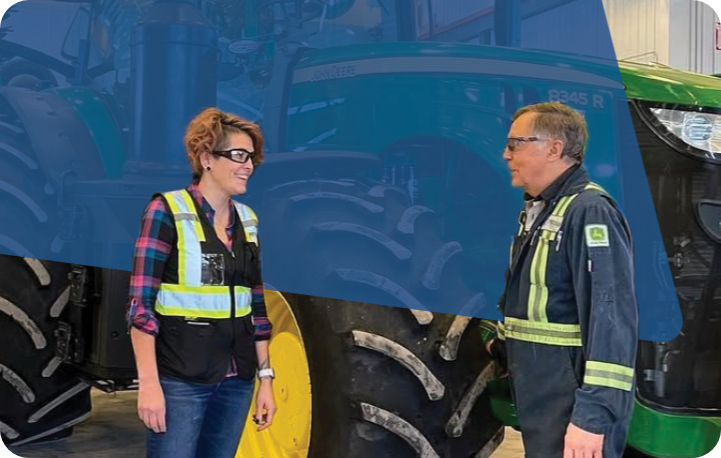
Erin leads with empathy, communication, and genuine connection, focusing on what workers experience every day. By building trust, encouraging open...

Melanie McGrath shifts workplace safety from policy and checklists to a people-led safety leadership culture rooted in trust, ethical leadership,...

Ethan Winder’s approach to safety leadership goes beyond rules, he focuses on communication, trust, and understanding the real work people...



